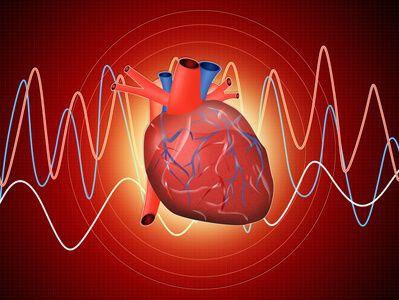Noradrenaline (or norepinephrine) seems a safer choice than adrenaline (epinephrine) in patients undergoing acute myocardial infarction complicated with cardiogenic shock, according to the outcomes of this randomized study. Patients receiving adrenaline more often developed refractory shock, which led to early termination of this study.
 The administration of adrenaline was associated to over increased cardiac rate, and prolonged acidosis and lactic acidosis.
The administration of adrenaline was associated to over increased cardiac rate, and prolonged acidosis and lactic acidosis.
Even though both drugs are commonly used, different countries ─even different institutions within the same countries─ have different protocols for patients in cardiogenic shock. This was the rationale behind the study.
A total of 57 patients in cardiogenic shock from 9 hospitals of France where randomized to adrenaline (n=27) vs noradrenaline (n=30). There were no differences in the number of patients receiving intra-aortic balloon pump after PCI.
Read also: Invasive Strategy in Frail Patients Is Safe.
The primary end point, cardiac index evolution or change, showed no significant differences between the use of adrenaline and noradrenaline.
Similarly, there were no differences in most hemodynamics secondary end points (mean blood pressure, systemic vascular resistance, cardiac index, pulmonary arterial pressure, wedge pressure, ejection fraction, biomarkers or arrythmia).
At 60 days, mortality with adrenaline was 52% vs 37% in the noradrenaline group (p=0.25).
Read also: Should Sex Be Taken into Account with Left Main Coronary Artery Revascularization?
Despite the latter, the adrenaline group presented higher cardiac rate and higher levels of lactic acidosis but received less additional inotropic for support.
A significant difference was observed in the adrenaline group: a higher refractory shock (37% vs 7%; p=0.008). This was not a prespecified end point since it was not anticipated as a problem, and this finding led to study termination.
There might be different types of cardiogenic shock requiring tailored treatments. For instance, bradycardic patients in theory could benefit from adrenaline, compared to tachycardic patients, and patients with ventricular arrythmia.
Original title: Epinephrine versus norepinephrine for cardiogenic shock after acute myocardial infarction.
Reference: Levy B et al. J Am Coll Cardiol. 2018;72:173-182.
Get the latest scientific articles on interventional cardiologySubscribe to our weekly newsletter
We are interested in your opinion. Please, leave your comments, thoughts, questions, etc., below. They will be most welcome.





